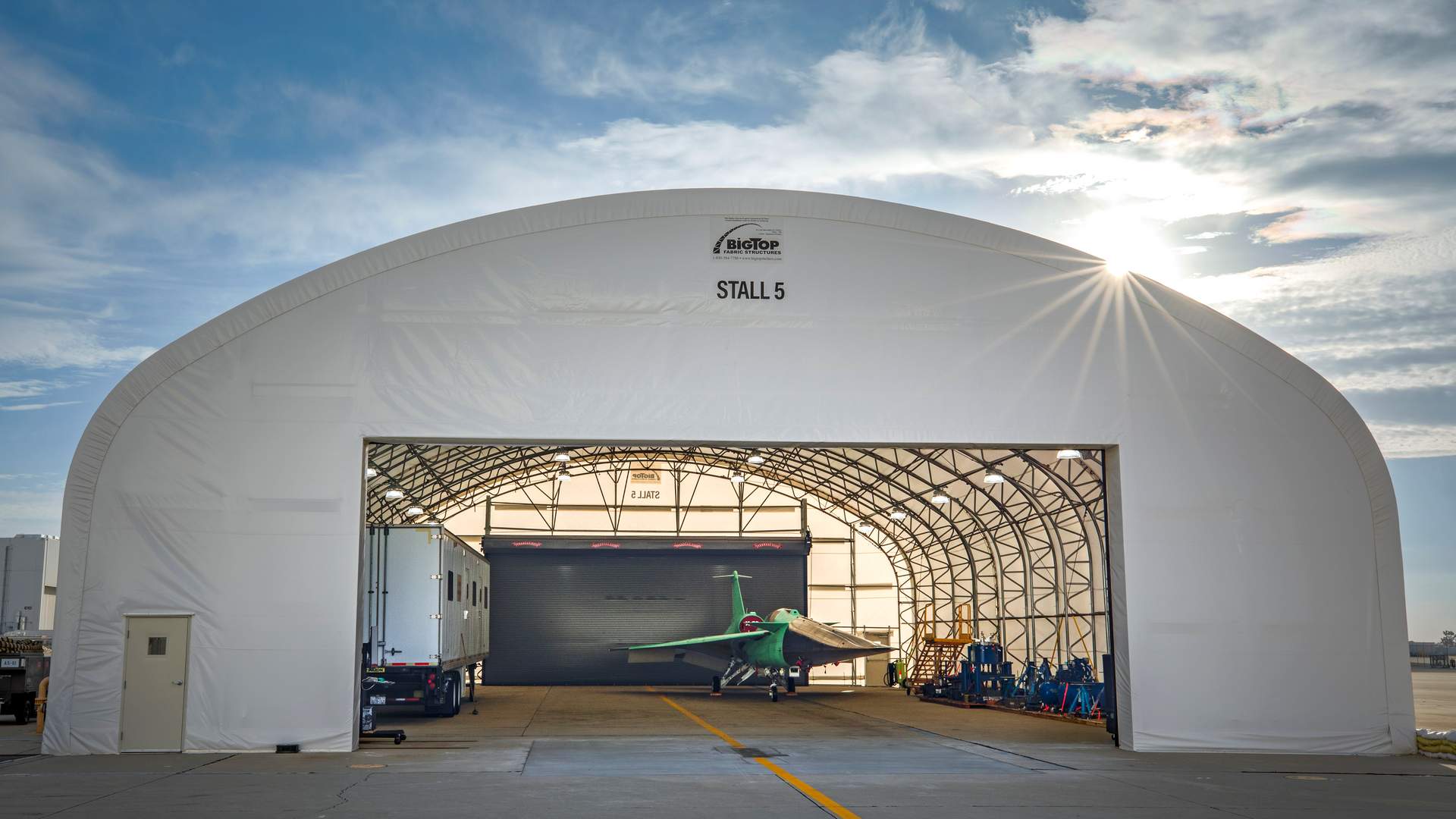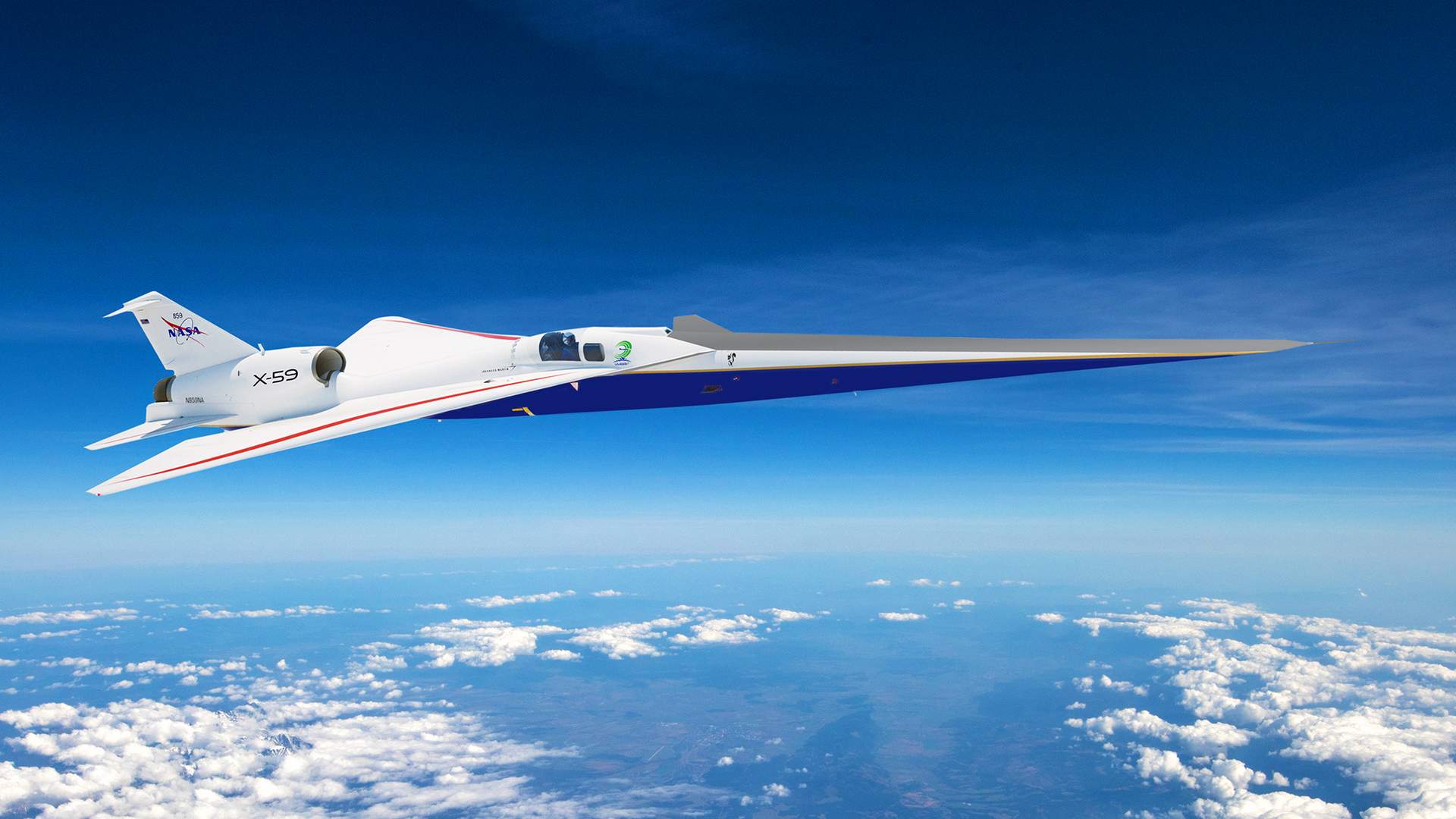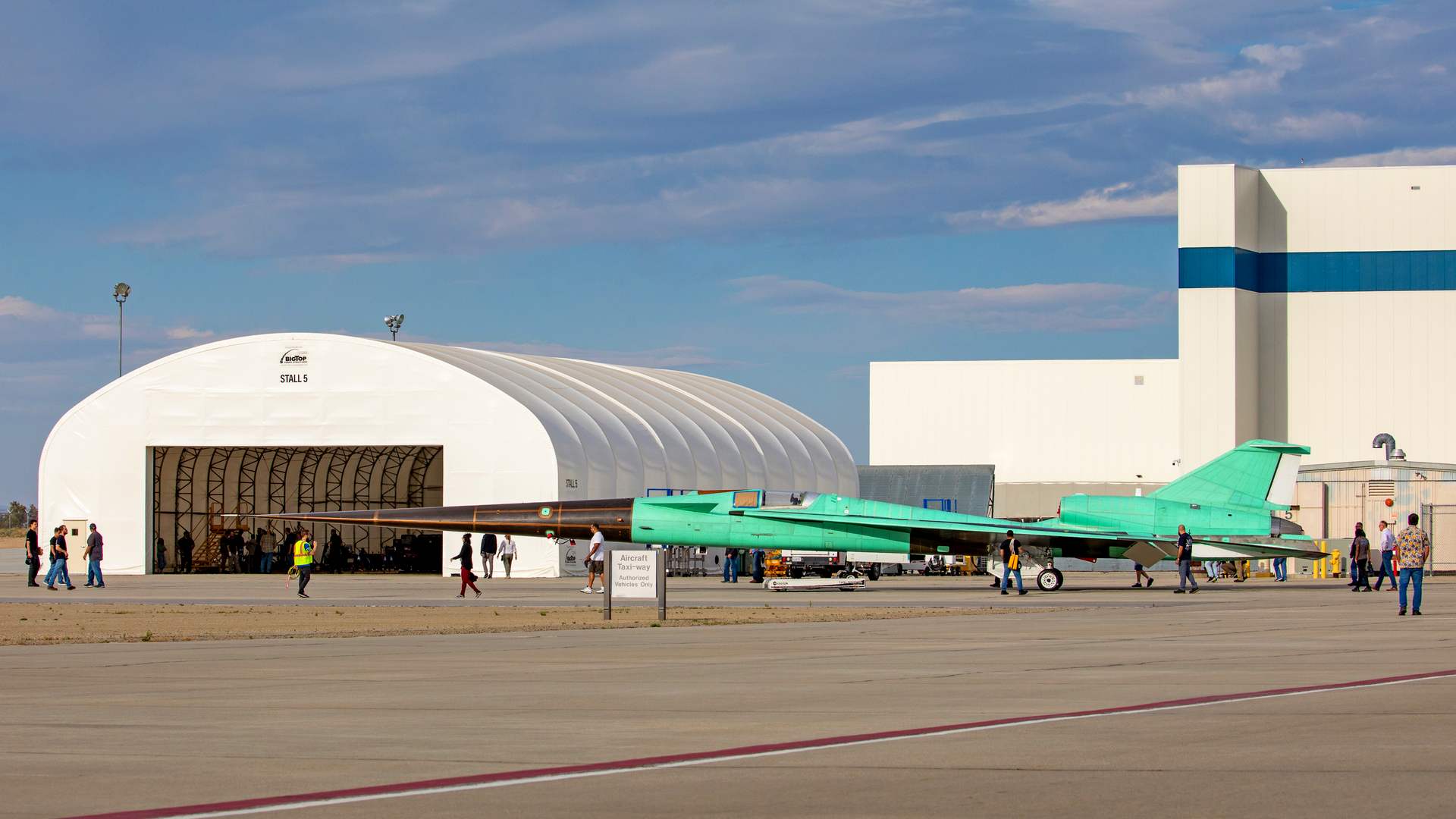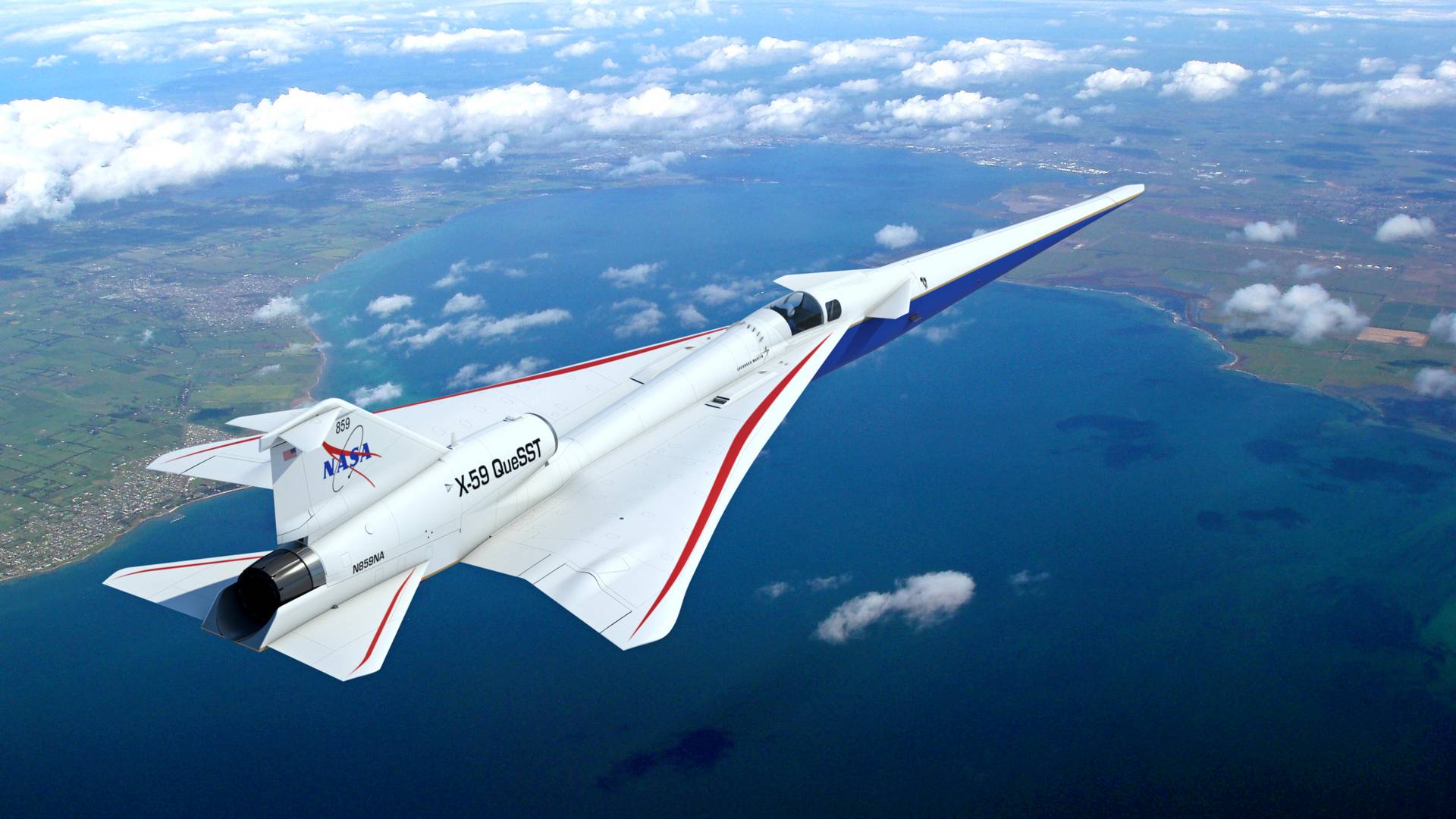It still needs a paint job, but the NASA X-59 supersonic testbed now has its final form, and preparations for its first flight are underway.

Since the early 1970s, there has been a ban on supersonic flights over land. There are exceptions for military aircraft, in military airspace, and in specific emergencies elsewhere. Most other countries eventually instituted similar rules.
But the basis for this blanket ban is that ALL supersonic aircraft will produce similar, unacceptable noise. NASA plans to dispute this, thanks to the flight test program of its X-59. The agency hopes to prove that, with the right shape, a supersonic jet could produce a “thump”, instead of a “boom”.

This is the sort of “thump” that people might not even notice in a noisy city. That’s what the flight test program of the NASA X-59 will prove – or disprove. The pictures you see here (renderings excluded) are the latest update on the aircraft’s assembly. It is now wearing its long, composite nose, and Lockheed Martin, its manufacturer, has moved it to its own space in the flight line.
The single-seat testbed uses many parts from existing fighter-category aircraft. Its engine is a GE F414, similar to what the F/A-18E/F and the Saab Gripen-E use. Its landing gear appears to come from Lockheed’s own F-16. And the pilot’s canopy looks very T-38/F-5-ish.

NASA X-59 – First Flight Later This Year
But the unique fuselage of the NASA X-59 means that its pilot won’t be able to see directly ahead, on the ground or in flight. The aircraft needs a special forward vision system and projection screen. The purpose of this long “proboscis”, is to reduce its sound signature. Hopefully.

In any case, this is not the aircraft’s official rollout. That will come later this year, along with its first flight. The Mach validation flight program of the NASA X-59 will begin in 2024, with other test aircraft taking readings of its acoustic signature. If all goes well, flights over American cities will follow in 2025 and 2026.
Assuming that the X-59 does indeed produce a “thump” high altitudes, that busy city dwellers won’t notice, the FAA will change some rules. Broadly speaking, the idea is to turn the blanket supersonic ban into an acoustic signature-based ban.

We then need to see who may build a commercial aircraft that can benefit from the flight testing of the NASA X-59. For now, Boom Supersonic doesn’t seem to be optimizing its Overture design for a quiet flight over land.
In general, even if the FAA (and others) allow such flights over land, the ease with which such designs can be implemented, for planes with multiple occupants, remains unclear.




2 comments
Bruce Atkinson
What is the benefit to the public that tax dollars are paying NASA/Lockheed to build this for for airline commercial use to move the elite class from one NASA supported climate change scam meeting to the next? How many federal bureaucrats and politicians stand to profit? I sense another Fauci problem.
Egil
If this is not the Ugly Duckling, I don’t know what is… 🙂 Fascinating project, though.